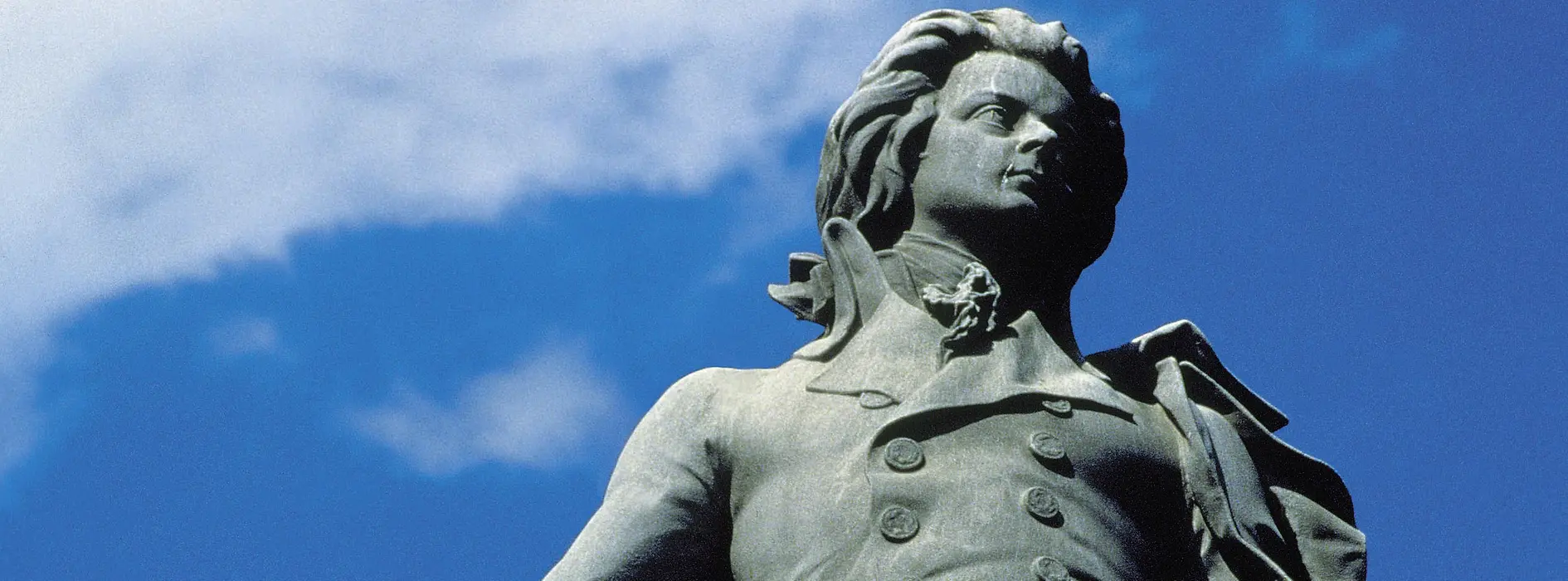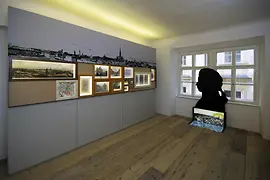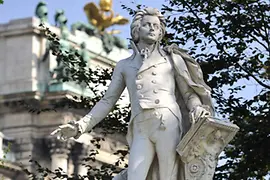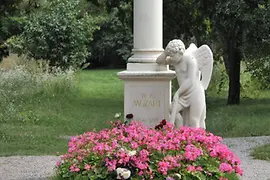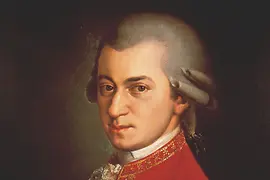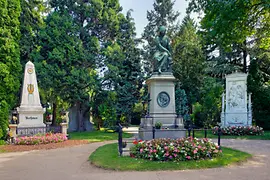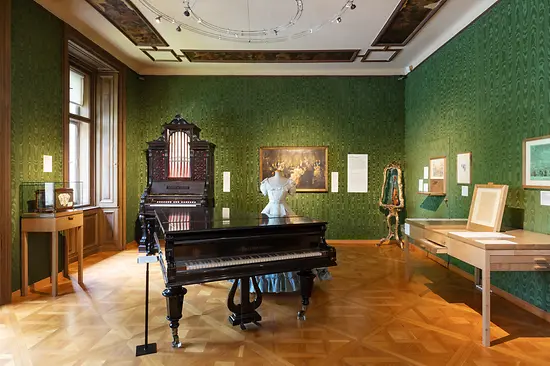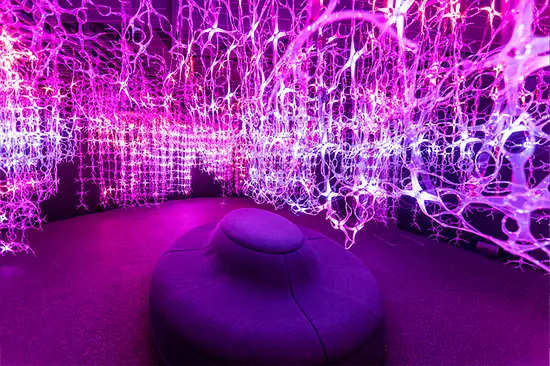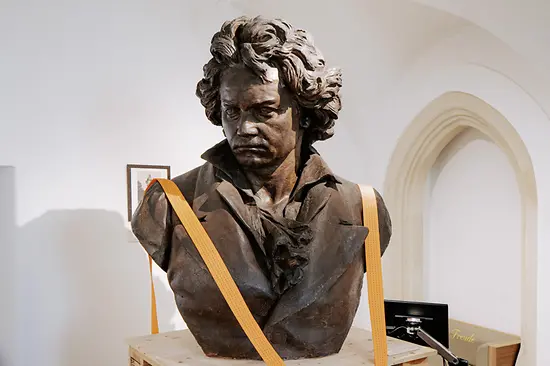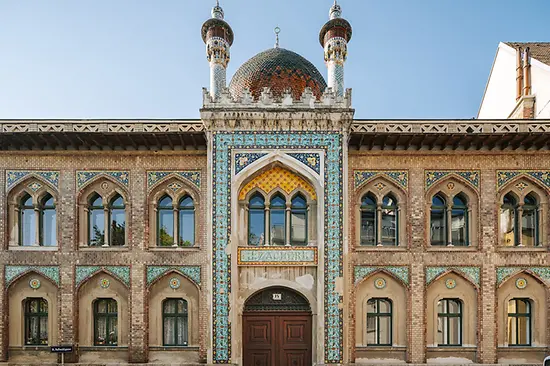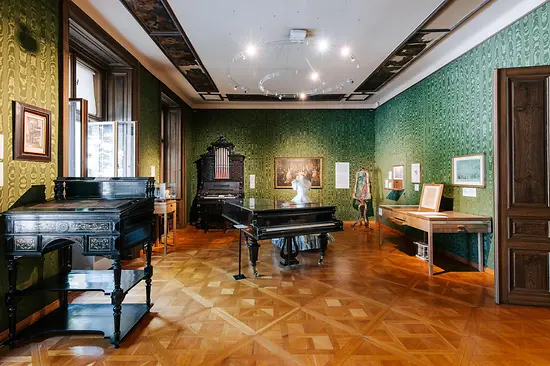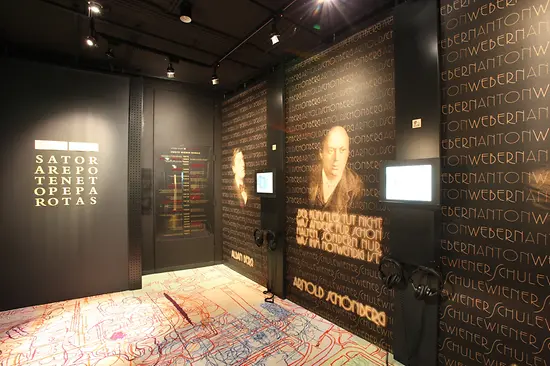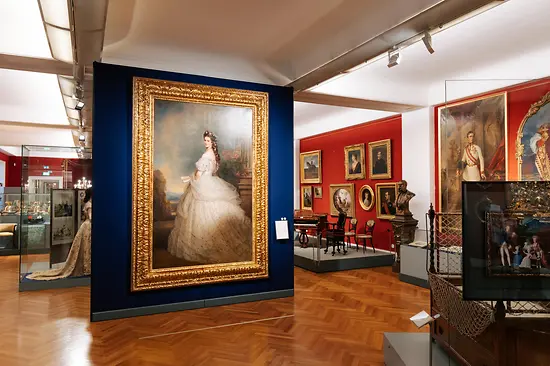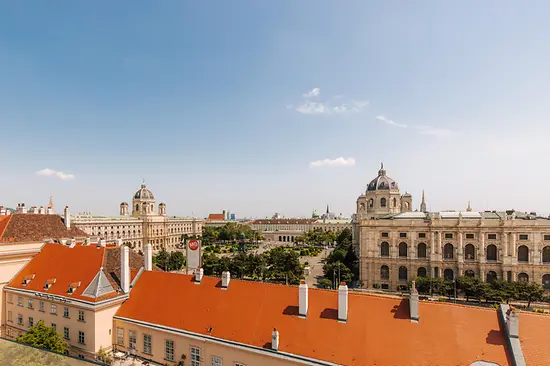Mozart in Vienna
Mozart fans can follow in the genius' footsteps in Vienna – from Schönbrunn Palace and St. Stephen's Cathedral to Mozarthaus Vienna, an immersive museum that includes Amadeus' original, preserved apartment, to Mythos Mozart, a multimedia experience in the place where Mozart composed "The Magic Flute" and the Requiem, and died in 1791 (today in the basement of the Steffl department store).
Also impressive is the marble Mozart monument from 1896 – today situated in the Burggarten, surrounded by flowers laid out in the shape of a clef.
Mozart locations in Vienna
Johannes Chrysostomus Wolfgangus Theophilus Mozart was born in Salzburg on January 27, 1756. He wrote his first composition at the age of five. During a visit to Vienna in 1762, the Mozart children were allowed to perform for Maria Theresia at Schönbrunn Palace. After the concert, “Wolferl” jumped onto the monarch’s lap, hugging and kissing her. The child prodigy became the talk of the town.
Display alternative text
Mozarthaus Vienna
In 1768, Maria Theresia granted the twelve-year-old a two-hour audience at the Imperial Palace, the residence of the Habsburgs. And in the fall of 1781 Mozart gave a concert there in honor of the Duke of Württemberg. He spent Christmas Eve of that year at the Imperial Apartments with Emperor Joseph II, Maria Theresia’s son.
His own master
In 1781 Mozart, then 25 years old, lived for a few weeks at the House of the Teutonic Order in Vienna, in the company of his employer, the Archbishop of Salzburg. It was here that he decided to declare his independence, and was ungraciously dismissed. Mozart stayed in Vienna and worked as an independent musician, supporting himself through commissions for compositions and by giving piano lessons.
Mozart married Constanze Weber at the gothic St. Stephen’s Cathedral in 1782. The couple immersed themselves in the musical and social life of Vienna, became parents of six children (only two of whom survived beyond infancy) and – despite a few affairs – stayed together until Mozart’s death.
At a series of concerts known as the “Sunday Academies”, Mozart played the piano and sang in the Grand Hall of what is now the National Library in 1786.
That same year, at the request of Joseph II, a “musical competition” took place between Mozart and the imperial Kapellmeister Antonio Salieri at the Orangery of Schönbrunn Palace. The emperor preferred Salieri.
Mozart reached the peak of his career in around 1790: “Così fan tutte” was premiered that year, followed by “La Clemenza di Tito” and “The Magic Flute” in 1791. Mozart became seriously ill while composing the Requiem. He died on December 5, 1791 at the age of 35. His body was consecrated in the same place where he married: at St. Stephen’s Cathedral.
Mozart’s final resting place is in the atmospheric Cemetery of St. Marx: following the custom of the time, he was buried in a pit grave with other bodies and no cross. But he will always be remembered – a star for all time.
Further Mozart tips:
- Online tour in Mozart's footsteps, with description and localization on the city map
- House of Music: Vienna's sound museum offers interactive access to the world of sound and to Mozart in particular, with a Mozart hologram and the installations "Namadeus" and "Facing Mozart".
